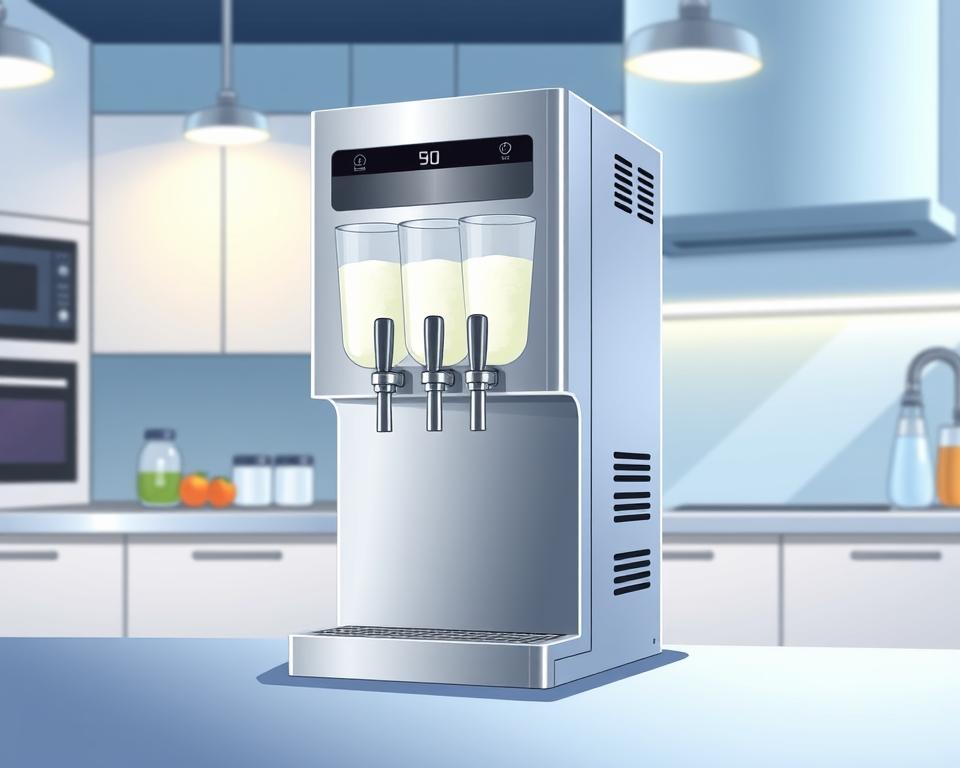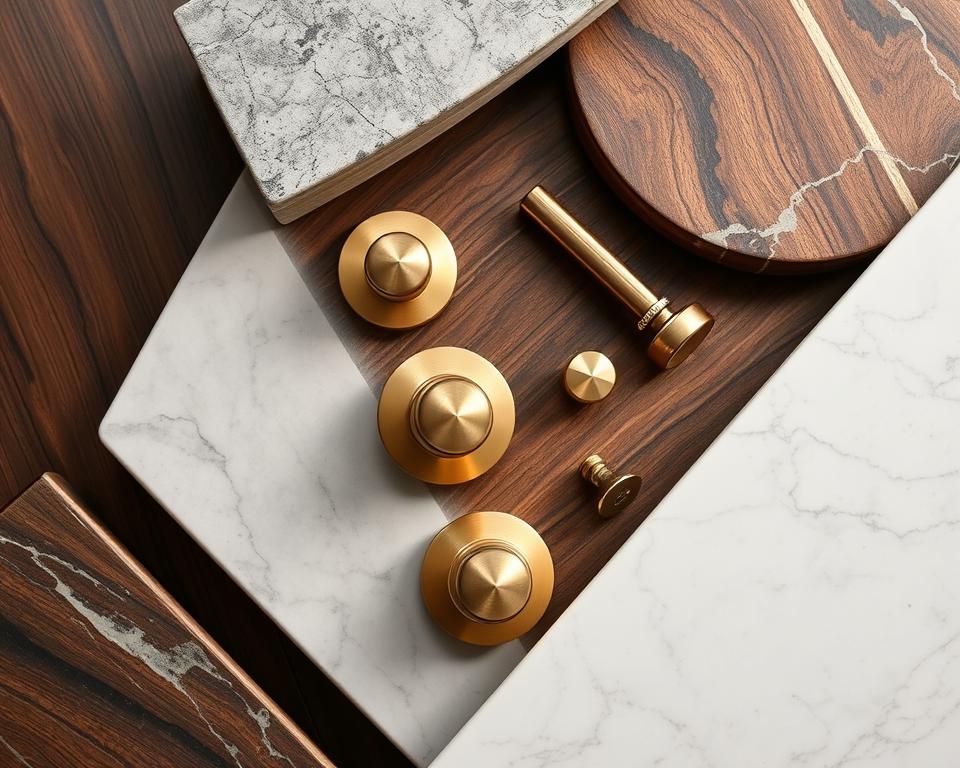Repurposing Industrial Furnishings HK Developments
Did you know that reusing industrial furniture in HK is on the upswing? More people are selecting pre-owned items. This change shows a increasing interest in environmental consciousness and distinctive home decor. Residents are drawn to the appeal and personality of transformed pieces.
Platforms like Expat Asia and Facebook Marketplace are evolving into popular spots for discovering unique furniture in Hong Kong. The attraction of industrial design in HK is clear. Places like Upcycle Hong Kong, which aids Hong Kong Dog Rescue, pave the path. They advocate upcycling and waste reduction.
The requirement for environmentally friendly living options is increasing. The appeal of Stockroom Hong Kong has never been stronger. It merges creative design with environmental awareness. This not only improves home appearance but also advantages the nature.
Overview to Industrial Furniture in HK
Industrial furniture in HK has a established heritage, originating from the city’s factory history. It’s made from unprocessed materials like steel, timber, and concrete. These designs provide a retro vibe while still being practical today. The classic industrial style seamlessly combines looks with functionality, making it a popular choice for modern homes.
The change of areas like Kowloon East into artistic communities has greatly impacted the furnishing market. Independent bands and creative industries moved in, searching for budget-friendly spaces and creative space. This migration enhanced the allure of industrial furniture, making it a staple in living spaces. In the early 21st century, costs were low, with $1,000 getting you you five hundred to 600 square feet.
The change from production to creative industries has transformed industrial styles. Today, eco-friendly furnishings in HK often features these vintage-inspired pieces. This appeals to those who are concerned with the ecosystem. By merging classic appeal with green practices, Hong Kong’s furniture scene has developed, echoing the city’s lively culture.
Development of Transforming Tendencies
In HK, the shift of reusing furnishings has expanded considerably, demonstrating a deeper dedication to environmental sustainability. Architectural firms like MVRDV HK head preserving edifices instead of demolishing them. They modernize the internal spaces of historic buildings, utilizing the adaptive reuse technique. This approach renews industrial structures that have become obsolete.
Historic industrial buildings are famous for their unique features, such as large spaces and diverse functions. Their repurposing possibilities offers a creative solution to contemporary requirements while tying us to the history. To harmonize conservation with usability, a decision process is vital for efficient transformation projects.
The growth of marketplaces for second-hand goods and home-based upcycling culture marks a substantial change in community priorities. People now cherish repurposed items and engage in transformed furniture projects in Hong Kong. Local enterprises meet this demand, supporting a green economy that lowers waste.
| Aspect | Adaptive Reuse Benefits | Community Impact |
|---|---|---|
| Conservation | Maintains historical importance | Encourages local pride and heritage appreciation |
| Environmental sustainability | Minimizes waste and resource use | Encourages environmentally friendly habits among locals |
| Ingenuity | Fosters creative design solutions | Backs local artisans and small ventures |
| Financial Growth | Increases property values | Generates employment opportunities in the reuse sector |
Over the last five years, there’s been a growth in initiatives turning previous factory spaces into creative and manufacturing areas. This transition marks a societal change towards eco-friendliness and honoring the history of these structures. The outlook of furniture creation in Hong Kong seems to be leaning towards repurposed furniture initiatives. These emphasize creativity and responsibility.
Perks of Opting for Industrial Furniture
Opting for industrial furnishings in Hong Kong offers many advantages, combining style with practicality. It’s known for its sturdiness, made from components like steel, reclaimed wood, and cement. This makes it a durable choice for residents, establishing itself as a prudent investment.
The versatility of factory furnishings to various home styles is a significant benefit. It fits perfectly in current lofts or country kitchens. The addition of solid oak wood furniture in Hong Kong introduces comfort and dimension, complementing the unfinished look of steel and concrete.
Another important advantage is the cost-effectiveness of industrial furniture. With new pieces often being costly, transformed alternatives provide trendy yet affordable alternatives. Residents seeking affordable home design will find industrial furniture a wonderful alternative, achieving a trendy aesthetic without overspending.
The unique combination of classic and modern design in industrial furniture creates a friendly environment. It fosters social living, promoting community gatherings and interactions. This style combines usefulness with distinctiveness, making it more and more preferred for those who cherish both visual appeal and cost-effectiveness.
| Perk | Details |
|---|---|
| Sturdiness | Built with strong materials, ensuring longevity. |
| Style Adaptability | Suited for multiple interior aesthetics, such as modern and country. |
| Economic Value | Economical choices that provide access to fashionable options. |
| Community Focus | Encourages social interactions and gatherings in design. |
| Unique Aesthetic | Merges classic charm with modern design, boosting visual attractiveness. |
Repurposing Industrial Furnishings Hong Kong
In Hong Kong, the tendency of transforming factory furnishings has experienced a significant rise. It showcases a unique combination of creativity and usefulness. Nearby skilled workers and stores, like Upcycle Hong Kong, focus in crafting one-of-a-kind furnishings. These furnishings add both personality and usability to various spaces.
This approach attracts those in search of unique furniture Hong Kong. It also promotes a enhanced understanding for sustainable approaches within the local area.
Distinctive Patterns and Visual Charm
Transformed industrial furniture is recognized for its varied designs. These styles blend functionality with artistic expression. Nearby stylists convert ordinary items into highlight pieces that can enhance any room’s visual appeal.
For illustration, a vintage rosewood shelf by Poul Cadovius can improve a loft space. An old map of Asia offers a personal touch at the entrance. The modification of these materials produces unique furniture Hong Kong that accommodates varied tastes. It is particularly preferred among those who favor the industrial style.
Affordable Choices for Interior Design
Opting for repurposed choices presents budget-friendly options for interior design. Buyers can find high-quality pieces at more affordable costs than new items. Buying reused furnishings not only aids in saving money but also supports local artisans.
This contributes to the economy. With industrial style furniture Hong Kong evolving into increasingly popular, buyers are keen to discover cost-effective yet stylish choices. These options match their interior design requirements perfectly.
Eco-friendly Practices in HK’s Furniture Sector
Environmentally friendly methods are crucial in HK’s furniture sector, vital for reaching zero carbon emissions by 2050. Growing recognition of environmental impact has spotlighted sustainable furniture in HK. Transforming industrial furniture to reduce waste supports the city’s sustainability objectives.
Homes in Hong Kong emit about four metric tons of CO2 yearly. Considering that people dedicate nearly 90% of their time spent inside, l shape Sofa Hong Kong can enhance indoor air quality and wellbeing. Environmentally friendly methods in Hong Kong promote better living conditions and manage garbage management challenges. The worldwide furnishings sector, estimated at USD 575 billion, underscores the requirement of sustainable consumption.
Regional enterprises, like Eaton HK hotel, have substantially lowered waste by 60% through donations and processing. Their initiatives show the furniture industry’s ability to pioneer in eco-friendly methods. Using resources like bamboo material, which grows in less than five years, demonstrates the effectiveness of environmentally friendly design.
| Material Type | Growth Period | CO2 Emissions Avoided (per 10,000 tons) |
|---|---|---|
| Bamboo | Under five years | N/A |
| ECONYL® | N/A | 65,100 tonnes |
| Recycled Glass | N/A | 246 kg per ton |
Cutting-edge styles that merge nature with residences represent environmentally friendly approaches in Hong Kong. The circular economy model encourages reusing materials. This highlights sustainable practices in the furnishings sector and the society. Eco-friendly furnishings is a progressive method for Hong Kong’s waste management challenges, aiding both buyers and the nature.
Preferred Trends of Reused Furniture
In HK, the need for unique furnishings designs continues to thrive. Two preferred trends emerge as favorites: retro industrial style and current sustainable options. Each design represents unique aspects of aesthetics and practicality, attracting a broad variety of customers.
Retro Factory Style
This style captures the core of HK’s vibrant industrial heritage. It merges elements of rustic appeal with modern visuals. Retro furniture in Hong Kong echoes with many, displaying a combination of repurposed resources, such as timber and steel.
Robust industrial furnishings exemplifies this trend, frequently marked by strength and enduring attractiveness. These furnishings not only offer practical uses but also share stories of the past. They improve the entire ambiance of a space.
Contemporary Eco-Friendly Choices
As environmental consciousness turns into a focus, modern sustainable alternatives offer a fresh approach on furniture design. Produced using eco-friendly resources and using cutting-edge methods, these pieces cater to sustainably minded customers. Repurposed furnishings, notably pieces crafted from wooden pallets, demonstrates the potential of reusing materials to design attractive, functional designs.
Such choices bolster a dedication to cutting down on waste while offering fashionable options for contemporary living. With a concentration on design and eco-friendliness, these current environmentally friendly choices serve different interior design schemes.
Finding Repurposed Furnishings in HK
Delving into HK’s vibrant local environment offers various avenues to reused furnishings. Nearby shops and online platforms are essential in this search. They offer a variety of unique furniture solutions that merge environmental consciousness with creativity.
Regional Stores and Digital Options
Initiating your quest at regional shops is a good plan. Locations like 2nd Chance focus in upcycling and restoring furnishings. Digital platforms like Facebook Marketplace and another online marketplace also have selections for one-of-a-kind furnishings in Hong Kong. These choices are perfect for discovering one-of-a-kind pieces without breaking the bank.
Repurposing vs. Buying New
Selecting between reusing and buying fresh furniture is a crucial choice. Reusing converts old pieces into something new, supporting creativity and environmental consciousness. Many people participate in this, increasing the lifespan of materials and reducing waste. On the flip side, buying fresh furnishings presents convenience and modern patterns.
For those interested in upcycling, concentrating on premium materials and skill is essential. Some firms supply after-sales services for used buys. This community-focused method makes transforming factory furnishings in Hong Kong a satisfying selection for sustainably minded buyers.
Understanding the variances between reusing and purchasing new can improve your search for one-of-a-kind furnishings. Whether you’re seeking regional stores, digital platforms, or upcycling projects, the process in HK strengthens your understanding for imagination and eco-friendliness.
Impact of Eco-Friendly Furniture on Wellness
Opting for environmentally friendly furnishings in HK has a substantial impact on health. Eco-friendly living encourages environmental consciousness and establishes healthier homes. Furniture made from solid wood, like oak, maple, and cherry, is durable and boosts indoor air standards.
Veneer desks, popular in the eco-friendly movement, use a fine layer of quality wood on a reliable foundation. This design minimizes resource waste and provides a solid, aesthetically pleasing option. It minimizes problems like bending or splitting, making it ideal for various environments.
Selecting locally crafted furnishings backs artisans and maintains heritage craftsmanship. This method cuts down on carbon emissions from shipping, supporting sustainable living. It allows consumers to take pleasure in unique designs while lowering environmental footprint.
Timeless furniture patterns promote purchasing high-quality craftsmanship. This builds environments that remain current for extended times, cutting down on the requirement of frequent changes. It matches a sustainable mindset, lowering environmental impact. Furnishings constructed from sustainable materials and environmentally friendly manufacturing processes promotes a better environment.
Investing in eco-friendly furnishings in HK can elevate health and combine design with eco-friendliness. It supports a improved lifestyle through intentional design selections. Emphasizing sustainability in the furnishings sector demonstrates a dedication to establishing environments that respect the nature and individual health.
Case Studies of Successful Transforming Initiatives
In Hong Kong, various projects demonstrate triumphant transforming projects that give old furnishings a new life. These conversions combine imagination with sustainability, showcasing nearby companies and residences that implement environmentally friendly practices. By recycling aging furnishings, these projects encourage unique furnishings styles in Hong Kong. They combine artistic elements with practical aspects.
A local café is a perfect illustration, turning discarded industrial shelves into trendy chairs. This initiative not only cut down garbage but also built a welcoming ambiance, appealing to a wide group. The café’s proprietor mentioned the success of utilizing one-of-a-kind and reused pieces. It enhanced the visual appeal while supporting environmental consciousness.
Private homes also contain unique refurbishments, such as used wooden wooden pallets transformed into fashionable coffee tables and outdoor lounges and Lounge chairs Hong Kong. This pattern displays the flexibility of transformed resources, producing unique furnishings not found in standard stores. Such projects in HK inspire others to improve their home decor with unique designs and eco-friendly approaches.
| Type of Project | Description | Benefits |
|---|---|---|
| Café Transformation | Conversion of industrial shelving into seating | Improved atmosphere, lowered garbage |
| Home Reuse | Old wood wooden pallets turned into furnishings | Unique designs, environmentally friendly approaches |
| Art Gallery Installation | Repurposed substances used for art installations | Aesthetic appeal, cultural importance |
| Community Workshop | Classes on furniture transformation | Skill development, community engagement |
These case studies demonstrate the strength of community involvement in encouraging one-of-a-kind furnishings styles in HK. They promote a sustainable mindset. By embracing such innovative approaches, the urban area can stay at the forefront in eco-friendly practices and fashionable interior solutions.
The Importance of Community in Supporting Repurposed Furniture
In Hong Kong, community projects are essential in raising awareness about transformed furniture. Community events and classes stimulate innovation, showing how used pieces can be reborn. These events educate locals on the importance of reusing and reusing furnishings.
Across districts, creativity thrives through collective efforts. Residents come together to learn upcycling, transforming trash into attractive home decor. This collective effort boosts individual skills and builds tighter social ties.
- Latest exhibitions have highlighted social and sustainable design brands, with 6 showcased to demonstrate creative ideas.
- Public spaces allocated for leisure and exhibitions amount to 70sqm, providing adequate room for exploration and learning.
- Displays reach a total of six, emphasizing the transformative potential of transformed furniture Hong Kong.
Programs like Project Futurus enhance community participation by merging culture with environmental consciousness. Over 107 dim sum sessions have engaged over 2,600 seniors, emphasizing the requirement of inclusivity in eco-friendly practices. The volunteer work, over 2,200, demonstrate devotion to a greener future.
Such projects not only raise awareness of environmental issues but also encourage a culture of resourcefulness. The repurposing trend shows rising awareness of environmental effects, showing that every waste item has potential. As more people engage in these efforts, the positive impact increases, leading to a lasting change.
Future Trends in Factory Furniture Creation
The outlook of industrial styling in Hong Kong is poised to be groundbreaking. With the worldwide market projected to reach USD 780.8 billion by 2030, creativity in furniture will lead the charge. Sustainability and usability will be at the center, motivated by buyer demand for eco-friendly and flexible pieces.
Intelligent furnishings is on the increase, integrating Internet of Things (IoT) technology for enhanced user interaction. Anticipate wireless charging pads, integrated speakers, and wellness monitoring systems in styles. These advancements guarantee to transform the consumer experience and set new benchmarks for usability.
Technological integration will go beyond connected features. Augmented reality (AR), virtual reality (VR), and extended reality (XR) will change shopping methods. Consumers will be capable of seeing how furniture appears in their space digitally, merging online and in-store shopping.
Robotic technology are poised to transform manufacturing, promising increased efficacy and precision. Automated systems will improve activities like cutting and assembly, minimizing trash and boosting product quality.
Eco-friendly awareness will be a key trend. Environmentally friendly production methods will include resources like bamboo, and reused wood. This change addresses consumer demands for sustainable choices.
Versatile furniture designs will cater to city living, where space is at a premium. Creative foldable and compact patterns will offer stylish solutions for limited spaces.
The blend of classic and modern visuals will continue to influence creators. They will intend to balance functionality with elegance, integrating cultural aspects. This strategy will establish a integrated movement, combining sustainability with style.
As a Final Point
In HK’s vibrant design environment, transforming factory furnishings continues to be a favored movement. With high real estate costs, converting pre-owned industrial areas into contemporary homes is becoming increasingly common. This transition shows a new path in urban living, blending imagination with usability.
Initiatives like the Mass Operations loft showcase how design and ease can coexist. These houses mirror unique preferences while promoting sustainable living. This movement not only meets aesthetic needs but also benefits sustainability goals.
By reducing trash from construction activities, HK can serve as a model in sustainable practices. Nearby projects and innovative projects encourage inhabitants to find out the allure of reused furnishings. This method backs a more sustainable lifestyle and contributes to a sustainable future.
Common Questions
What is repurposing industrial furniture in Hong Kong?
In Hong Kong, repurposing industrial furniture entails revitalizing used furnishings. These items, constructed with substances such as metal, wood, and concrete, retain their factory allure. This shift is driven by an interest in unique designs and eco-friendly lifestyles.
Why does industrial furniture popular in Hong Kong?
Factory furniture is popular in Hong Kong for its durability and diverse design. It also maintains historical value. Considering the city’s industrial history, these pieces blend well with modern interiors, paying homage to history.
How does repurposing furniture support sustainability?
Reusing furniture decreases waste by increasing the longevity of aged furnishings. It contributes to Hong Kong’s sustainability goals and promotes eco-friendly living. Using reused materials is encouraged.
Where can I find unique industrial furniture in Hong Kong?
One-of-a-kind industrial furniture can be found within nearby shops like 2nd Chance. Internet platforms such as Asia Expat and Facebook Marketplace also provide a range of reused and antique items. These showcase the city’s industrial heritage.
What are selecting repurposed industrial furniture?
Transformed industrial furniture is often more affordable compared to brand-new pieces. It provides a unique appearance and versatility, suiting different interior designs. It’s a wise choice for property owners and tenants.
Will repurposed furniture impact my health and well-being?
Yes, selecting environmentally friendly furnishings improves indoor air quality. Eco-friendly materials and styles build spaces that promote well-being and mindfulness.
What styles of repurposed furniture are in vogue in Hong Kong?
Trends consist of vintage industrial aesthetics that highlight the city’s heritage. Contemporary sustainable items also suit contemporary tastes. This mix of old and new is favored in living spaces.
Are there community initiatives supporting repurposed furniture in Hong Kong?
Absolutely! Local events, workshops, and collaborations encourage creativity and sustainability. They teach residents on the benefits of reusing furniture and foster community engagement.
What are some successful case studies of repurposed furniture projects in Hong Kong?
In Hong Kong, several businesses and residences have transformed old furniture into cutting-edge designs. These endeavors embody style and sustainability. They illustrate how repurposing can upgrade spaces while preserving the city’s industrial character.
What upcoming trends can we expect in industrial furniture design?
Upcoming trends in factory furniture design are expected to include advanced technology incorporation and versatile items. Sustainability will continue to be a priority, addressing consumer demand for genuine and sustainable choices.



